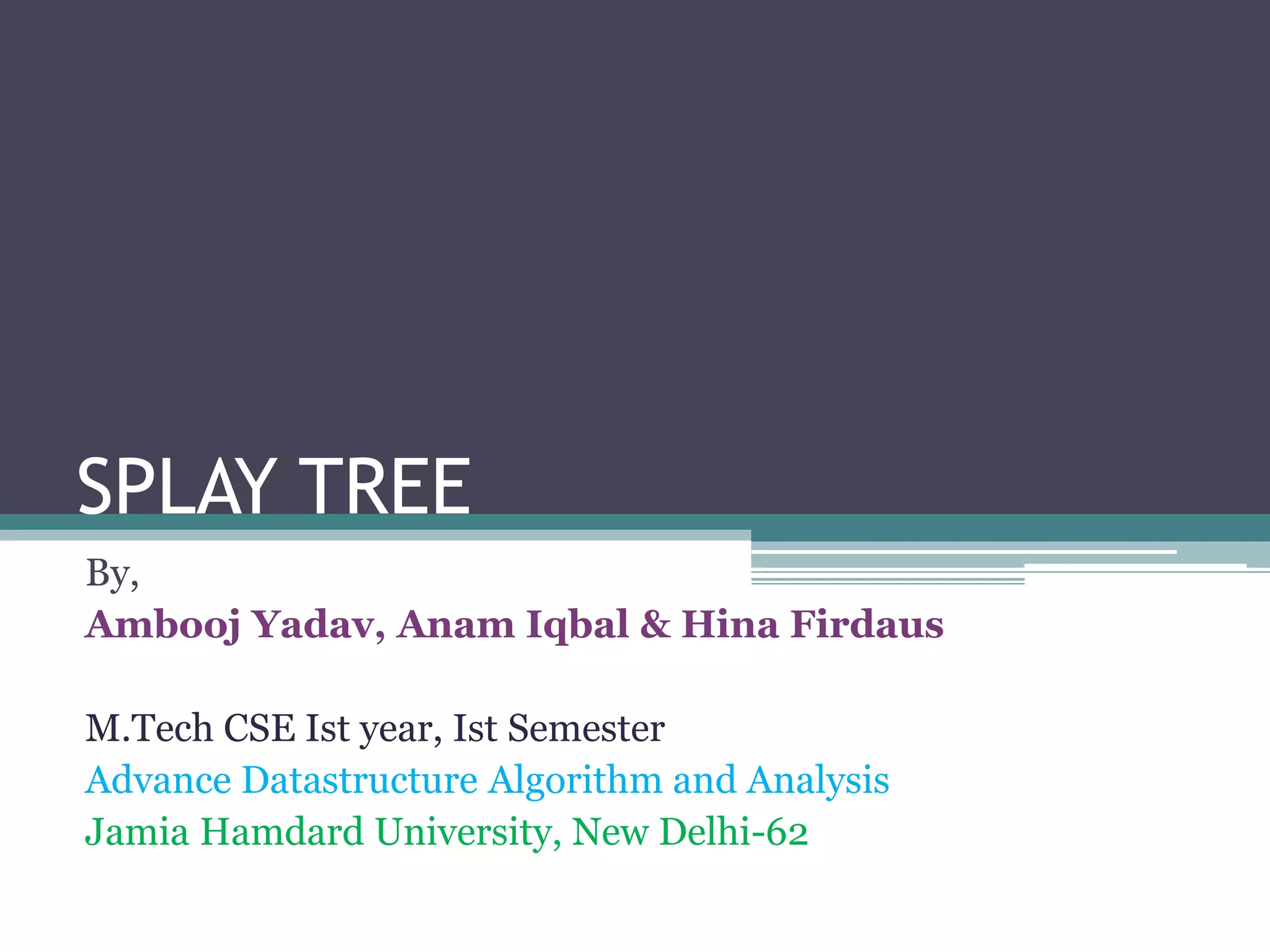The document discusses splay trees, a type of self-adjusting binary search tree that reorganizes itself to bring frequently accessed nodes closer to the root, thereby improving access times. Key operations like insertion, deletion, and search are described along with their amortized analysis, emphasizing that while individual operations can take linear time, the average performance is logarithmic over a sequence of operations. The document also compares splay trees with AVL trees, highlighting the conditions under which each type is preferred.




































![Putting it together
We repeat the steps until X replaces the root R
• zig only happens once, so the 1 is only added once/
• Each time, the last Rf(X) is cancelled by the next –Ri(X)
The only terms left are: AT(total) <= 1 + 3*[Rroot(X) – Rinitial(X)]
Rinitial(X) could be as low as 0, Rroot(X) as high as log N •
Thus, total budget for whole sequence is O(log N)
OPERATION COST
AT(zig) < = 1+ ∆R(X) <= 1 + 3 [Rf(X) –
Ri(X)]
AT(zig-zag) <= 2 ∆R(X) <= 3 [Rf(X) –
Ri(X)]
AT(zig-zig) <= 3 ∆R(X) <= 3 [Rf(X) –
Ri(X)]](https://image.slidesharecdn.com/splaytree-171227043127/75/Splay-tree-37-2048.jpg)
